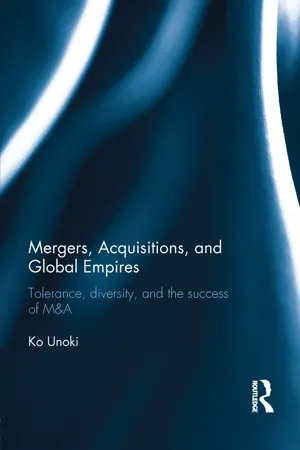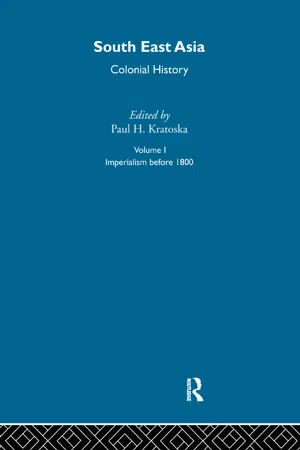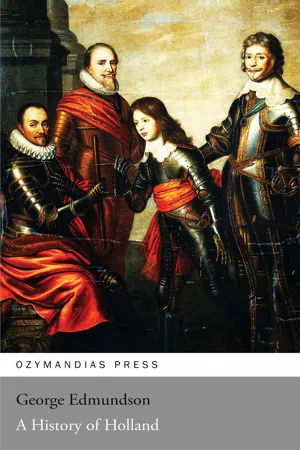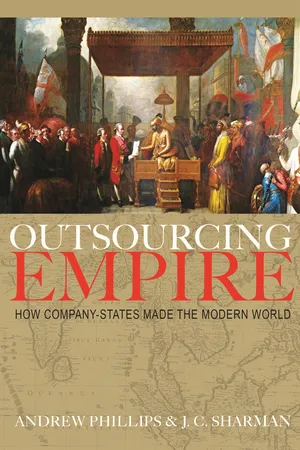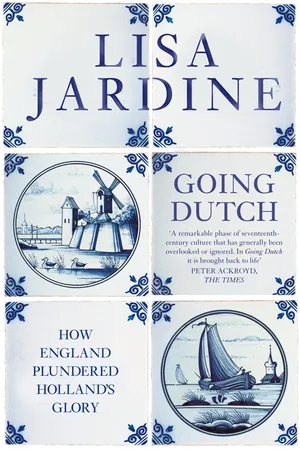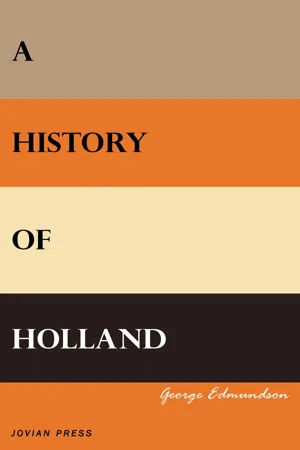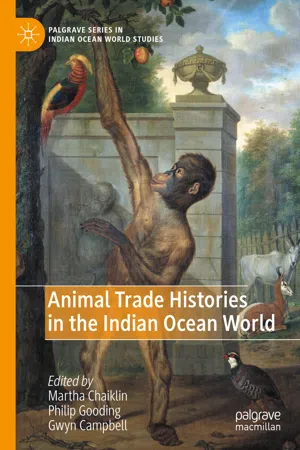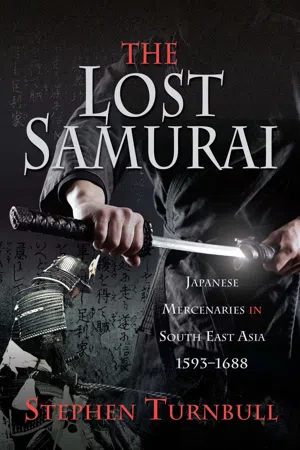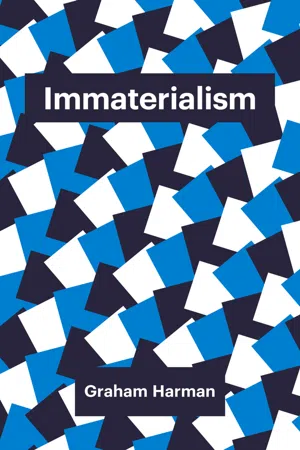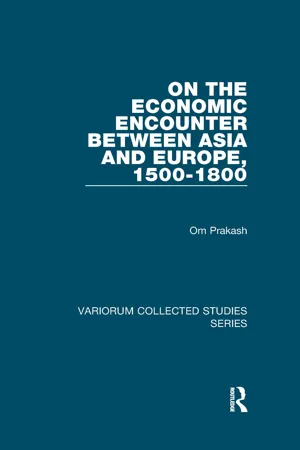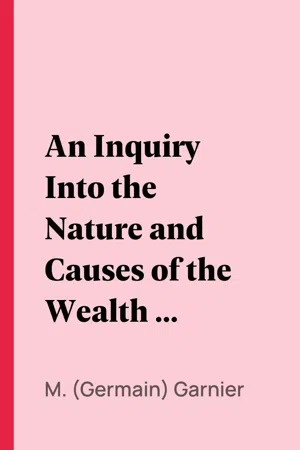History
Dutch East India Company
The Dutch East India Company, established in 1602, was a powerful trading company that played a significant role in the colonization and trade in the East Indies. It was granted a monopoly on Dutch trade in Asia and operated as a quasi-governmental entity, with its own military and administrative powers. The company's influence extended across Asia, Africa, and the Americas.
Written by Perlego with AI-assistance
Related key terms
12 Key excerpts on "Dutch East India Company"
- eBook - ePub
Mergers, Acquisitions and Global Empires
Tolerance, Diversity and the Success of M&A
- Ko Unoki(Author)
- 2012(Publication Date)
- Routledge(Publisher)
3 A seafaring empire
The rise of the Dutch East India Company
Introduction
In 1602, a group of trading companies based in the territories known as the Low Countries of Europe in the Middle Ages, which today encompass modern Belgium, Luxembourg, northwest France, and the Netherlands, merged to create what arguably became the most successful trading company of the seventeenth and eighteenth centuries. At its zenith, the Verenigde Oostindische Compagnie (the United East India Company, or VOC) established a commercial empire in Asia which allowed them to challenge and roll back Spanish and Portuguese dominance of the Asian spice trade, hold the English at bay, and monopolize the lucrative export trade in cloves, nutmeg, and mace. Through its “regional headquarters” in Batavia (present-day Jakarta, Indonesia), which served as the hub for VOC trading posts in Asia, the company engaged in a profitable inter-Asia trade, exchanging Japanese silver and copper, Chinese gold and silk, and Indian textiles. The VOC launched 1,700 ships in the seventeenth century and 3,000 in the eighteenth.1 Between 1602 and 1700, more than 300,000 people sailed from Europe on these ships; from 1700 to 1795, the number of people traveling on VOC ships exceeded 650,000.2Eventually, with changing consumer demand and the subsequent demise of the spice trade, the Anglo-Dutch wars, the growth of English sea power, and the rise of the English East India Company (EIC), the VOC went into a gradual decline and finally disbanded in 1799. Despite its end, however, the company’s performance spanning two centuries was impressive. The gross margin of the VOC from 1640 to 1700 was 64 percent, declining to a still respectable 59 percent from 1700 to 1795.3 From the year of its founding, the VOC was paying dividends to its investors that averaged 18 percent per year, with a standard minimum rate set at 12.5 percent.4 Total dividend payments up to 1650 were reported to be eight times the original investment amount, and the annual rate of return to a shareholder up to 1650 was 27 percent.5 Over the entire period, an incredible 99 percent of the VOC’s net profits was distributed to shareholders.6 In 1670, the VOC was arguably the richest company in the world, paying its shareholders dividends of 40 percent on their investments, employing over 80,000 people of various nationalities including 30,000 soldiers, and possessing a fleet of 200 trading ships.7 Between 1602 and 1733, the stock price of the VOC rose gradually from par (100) to a peak of 786.8 Such rises in stock value combined with generous dividends helped to make major shareholders such as the Dutch citizen and mayor of Amsterdam, Dirck Bas, very wealthy.9 - eBook - ePub
An Earthly Paradise
Trade, Politics and Culture in Early Modern Bengal
- Raziuddin Aquil, Tilottama Mukherjee(Authors)
- 2020(Publication Date)
- Routledge(Publisher)
CHAPTER 4 Beyond the Company and its Commerce Reviewing the Presence of the VOC in Mughal Bengal, 1600–1700BYAPTI SURThe Dutch East India Company or the Veerenigde Oost-Indische Compagnie (VOC) was founded in 1602 in the Dutch Republic for carrying on trade and territorial expansion in the Indian Ocean region. Among other places in Asia, it operated in Mughal India as well throughout the seventeenth and eighteenth centuries until its dissolution, when the English East India Company (EIC) took over political power. The base of the EIC was Bengal, which also witnessed a considerable Dutch presence in the previous years. The arrival of the VOC in Bengal was first registered around Pipli in 1615.1 At this time, the Dutch Company had already set up its bases in other places like Surat, the coast of Coromandel and Malabar. However, in Bengal, the VOC was yet to make its mark. By the end of the seventeenth century, the number of Dutch factories in this region had multiplied with the VOC trying to consolidate its position. A lot has been written about the EIC’s activities in Bengal in this century. Rila Mukherjee points out how the English discourse in these years began producing a stereotypical image of Bengal. Prompted by the English ambassador, Thomas Bowrey’s narratives, an image of ‘Brand Bengal’ was born.2 While this was, indeed, a significant phenomenon, the Dutch presence in Bengal was probably as important in the beginning as its English counter-part’s. Despite this, very little scholarly attention has been given to studying the VOC in this region and not much research has been done on Dutch visions of seventeenth-century Bengal.The conventional story of the VOC in Bengal is not that of an imperial success. Finally, the EIC went on to build one of the quintessential colonial empires of the British crown. It was the English who fought against the Mughals in the 1680s, at a time when the VOC openly discouraged such battles. This show of restraint on the part of the VOC has precisely been the reason for many scholars to conclude that the Dutch, in the end, were neither interested in nor were influential in the political space of Bengal. The fact that the VOC did not take a political interest in this area at a time when the scramble for territorial possessions was high is baffling. It provokes scholarly interest in trying to understand the motives of the Dutch Company in Bengal. What was the nature of the VOC’s presence here? Where did Bengal figure in the story of the seventeenth-century VOC expansion? This article tries to answer these questions by exploring the goals of the Dutch Company and its officials around this time in relation to the Mughal authorities and the locals of Bengal. - eBook - ePub
- Paul Kratoska(Author)
- 2022(Publication Date)
- Routledge(Publisher)
11 Monopoly and Free Trade in Dutch–Asian Commercial Policy. Debate and Controversy Within the Voc DOI: 10.1201/9781003101666-11 S. ArasaratnamSource: Journal of Southeast Asian Studies 4(1) (1973): 1–15.The Dutch East India Company (VOC) secured in March 1602, by charter from the States General of the Netherlands, a monopoly of eastern trade. Throughout its history of two centuries, it sought zealously to maintain and safeguard this monopoly against all interlopers and against any attempts at private trade by its own officers. With its establishment and expansion in the east the Company extended this concept of monopoly to embrace as much of Asian trade as it could master. It developed early the policy of acquiring a monopoly of certain key commodities of Asian trade by controlling the areas of production and hence the supply. It soon went further and declared a total monopoly of the entire seaborne trade of specific trading areas by virtue of conquest, enforced contracts and naval domination. Thus the close monopoly of the Europe/Asia trade and of large areas of their inter-Asian trade constituted a commercial system to which the Company’s Directors and its officers in Asia became closely attached and it formed a major plank in its commercial policy in the two centuries of its existence. Through this period, its energies and exertions were largely directed to the acquisition and maintenance of this many-sided monopoly system. Monopolistic policies and practices in trading dominated the thinking and activities of the Company at all levels of operation. The VOC was held as the archetype of such a trading body.Yet, despite the fact that the acquisition of a monopoly in any form of trade has always been considered by the Directors an axiom of commercial policy, there have been occasions in the course of the Company’s history when this has been challenged and various officials have strongly advocated opposite policies of freedom in trade and traffic and have questioned the belief that monopoly was desirable and profitable. Usually they fought losing battles but provoked interesting discussions in the Councils of the Company and anticipated the later and popular arguments for free trade. These challenges to official policy are spread through the two centuries from the first disputes between Jan Pietersz Coen and Laurens Reael (1614–1619) to the final comprehensive assault on the Company’s system by Dirk van Hogendorp (1799).1 - eBook - ePub
- George Edmundson(Author)
- 2018(Publication Date)
- Ozymandias Press(Publisher)
THE EAST AND WEST INDIA COMPANIES. COMMERCIAL AND ECONOMIC EXPANSION
AN ACCOUNT OF THE foundation, constitution and early efforts of the Dutch East India Company has been already given. The date of its charter (March 20, 1602) was later than that of its English rival (Dec. 31, 1600), but in reality the Dutch were the first in the field, as there were several small companies in existence and competing with one another in the decade previous to the granting of the charter, which without extinguishing these companies incorporated them by the name of chambers under a common management, the Council of Seventeen. The four chambers however—Amsterdam, Zeeland, the Maas (Rotterdam and Delft) and the North Quarter (Enkhuizen and Hoorn)—though separately administered and with different spheres, became gradually more and more unified by the growing power of control exercised by the Seventeen. This was partly due to the dominating position of the single Chamber of Amsterdam, which held half the shares and appointed eight members of the council. The erection of such a company, with its monopoly of trade and its great privileges including the right of maintaining fleets and armed forces, of concluding treaties and of erecting forts, was nothing less than the creation of an imperium in imperio; and it may be said to have furnished the model on which all the great chartered companies of later times have been formed. The English East India Company was, by the side of its Dutch contemporary, almost insignificant; with its invested capital of £30,000 it was in no position to struggle successfully against a competitor which started with subscribed funds amounting to £540,000.The conquest of Portugal by Spain had spelt ruin to that unhappy country and to its widespread colonial empire and extensive commerce. Before 1581 Lisbon had been a great centre of the Dutch carrying-trade; and many Netherlanders had taken service in Portuguese vessels and were familiar with the routes both to the East Indies and to Brazil. It was the closing of the port of Lisbon to Dutch vessels that led the enterprising merchants of Amsterdam and Middelburg to look further afield. In the early years of the seventeenth century a large number of expeditions left the Dutch harbours for the Indian Ocean and made great profits; and very large dividends were paid to the shareholders of the company. How far these represented the actual gain it is difficult to discover, for the accounts were kept in different sets of ledgers; and it is strongly suspected that the size of the dividends may, at times when enhanced credit was necessary for the raising of loans, have been to some extent fictitious. For the enterprise, which began as a trading concern, speedily developed into the creation of an empire overseas, and this meant an immense expenditure. - eBook - ePub
Outsourcing Empire
How Company-States Made the Modern World
- Andrew Phillips, J. C. Sharman(Authors)
- 2020(Publication Date)
- Princeton University Press(Publisher)
The Dutch Moment: War, Trade and Settlement in the Seventeenth Century Atlantic World by Wim Klooster (Cornell University Press, 2016).Nearer the expiration of the truce, shifts in power between Dutch hawks and doves renewed the impetus to open another front against the Habsburgs in the Americas and the Atlantic using the same institutional model as the VOC. Once chartered in 1621 for a term of 24 years, the West India Company set about raising its initial capital of 7.1 million florins, slightly larger than the 6.5 million VOC had begun with, but an order of magnitude greater than the English East India Company, let alone the Royal African or Hudson’s Bay Companies fifty years later.17 Where the VOC had reached its target in a month, however, the newer company took two years. This rather tepid support reflected concerns among investors about the extent to which the new company would pursue piracy and conquest over profits and dividends.18 These concerns were later shown to be well-founded.19Notwithstanding the differences indicated above, the charter otherwise followed the precedent of the VOC in the suite of legal and sovereign powers conferred, including powers to make war and peace, engage in diplomacy, and carry out administrative and judicial roles in the lands it conquered. “Once again, commerce, capital, and state power worked hand in hand to produce another weapon in the struggle for Dutch independence, profit and influence, and once again a company seemed to provide the proper and necessary means.”20 The WIC was granted a monopoly on trade from Newfoundland to the Cape of Good Hope, but also in the Pacific from the west coast of the Americas to New Guinea. Thus trading rights in the whole extra-European world were divided between the two Dutch company-states.21The company was to be run by a board of 19 directors, the Heeren XIX. The distribution of directorships among different chambers reflected both the United Provinces’ confederal structure, but also the financial and political power of Holland and Amsterdam in particular. The latter received eight votes on the board; Zeeland, four; the Northern Quarter, Maas, and Gronigen, two each; while as noted the representative of the States-General held the nineteenth vote. Although Amsterdam was clearly the most powerful, its dominance was somewhat less pronounced than in the VOC, or for that matter the States-General, where Holland provided over 58 percent of the total revenue.22 Despite their formal rights, as with the VOC, the WIC often rode roughshod over the wishes of its shareholders, refusing audits and only reluctantly distributing dividends.23 - eBook - ePub
Going Dutch
How England Plundered Holland's Glory (Text Only)
- Lisa Jardine(Author)
- 2014(Publication Date)
- Harper Perennial(Publisher)
Economic historians are broadly agreed that after the Restoration, England introduced financial systems and institutions in London modelled on the Dutch, though they differ somewhat in their accounts of how closely emulative the English arrangements were, and how successfully the organisational arrangements were transplanted. Such detail need not, though, concern us here. What matters for the present story is that by the 1680s there was a recognisable similarity between financiers and their organisation in London, and those in Amsterdam. What this produced was a mutual sense of understanding and compatibility which eased and facilitated financial transactions. Dutch bankers could do business with their counterparts in London, and vice versa. By contrast, French business with both nations declined over the same period.The beginnings of those distinctive and much-emulated Dutch mechanisms governing trade and finance are to be found in arrangements put in place in the founding charter of the Dutch East India Company (VOC). ‘The origin of modern stock exchanges that specialise in creating and sustaining secondary markets in the securities issued by corporations goes back to the formation of the Dutch East India Company in the year 1602.’ So writes one of the foremost authorities on Anglo—Dutch economic history.23The immediate motive for the formation of the VOC was twofold: to avoid the strain on financial resources caused by competition between commercial trading ventures operating independently, and to consolidate profit in order to finance the military objectives necessary to withstand the expansionist ambitions of France and Spain.24 The founders of the VOC took advantage of the fact that a willingness to pool resources against weighty outside odds was a deeply ingrained Dutch habit. Taxation on a per capita basis, to raise the money to repair dykes, or to secure vulnerable borders against foreign aggressors, was a standard Dutch practice – one for which successive English administrations expressed envy down to 1688, after which similar taxes were levied in England.Economic historians today on the whole agree that the activities of the VOC and its English competitor, the East India Company, in the seventeenth century established the conditions for and management of international trade which have endured to the present day. Fundamental to these were the innovative arrangements for distributing risk evenly among investors.Under the charter of the VOC, the States General empowered the new company to build forts, maintain armies, and conclude treaties with the rulers of the Asian territories with which it traded. To this end, the charter of the Company provided for a venture which would continue for twenty-one years, with a financial accounting only at the end of each decade (instead of following each completed voyage). All investors would be responsible for the Company’s debts, in proportion to their investment. This made the VOC what we now call a limited liability company. - eBook - ePub
- George Edmundson(Author)
- 2017(Publication Date)
- Jovian Press(Publisher)
THE EAST AND WEST INDIA COMPANIES. COMMERCIAL AND ECONOMIC EXPANSION
~AN ACCOUNT OF THE FOUNDATION, constitution and early efforts of the Dutch East India Company has been already given. The date of its charter (March 20, 1602) was later than that of its English rival (Dec. 31, 1600), but in reality the Dutch were the first in the field, as there were several small companies in existence and competing with one another in the decade previous to the granting of the charter, which without extinguishing these companies incorporated them by the name of chambers under a common management, the Council of Seventeen. The four chambers however—Amsterdam, Zeeland, the Maas (Rotterdam and Delft) and the North Quarter (Enkhuizen and Hoorn)—though separately administered and with different spheres, became gradually more and more unified by the growing power of control exercised by the Seventeen. This was partly due to the dominating position of the single Chamber of Amsterdam, which held half the shares and appointed eight members of the council. The erection of such a company, with its monopoly of trade and its great privileges including the right of maintaining fleets and armed forces, of concluding treaties and of erecting forts, was nothing less than the creation of an imperium in imperio; and it may be said to have furnished the model on which all the great chartered companies of later times have been formed. The English East India Company was, by the side of its Dutch contemporary, almost insignificant; with its invested capital of £30,000 it was in no position to struggle successfully against a competitor which started with subscribed funds amounting to £540,000.The conquest of Portugal by Spain had spelt ruin to that unhappy country and to its widespread colonial empire and extensive commerce. Before 1581 Lisbon had been a great centre of the Dutch carrying-trade; and many Netherlanders had taken service in Portuguese vessels and were familiar with the routes both to the East Indies and to Brazil. It was the closing of the port of Lisbon to Dutch vessels that led the enterprising merchants of Amsterdam and Middelburg to look further afield. In the early years of the seventeenth century a large number of expeditions left the Dutch harbours for the Indian Ocean and made great profits; and very large dividends were paid to the shareholders of the company. How far these represented the actual gain it is difficult to discover, for the accounts were kept in different sets of ledgers; and it is strongly suspected that the size of the dividends may, at times when enhanced credit was necessary for the raising of loans, have been to some extent fictitious. For the enterprise, which began as a trading concern, speedily developed into the creation of an empire overseas, and this meant an immense expenditure. - eBook - ePub
- Martha Chaiklin, Philip Gooding, Gwyn Campbell, Martha Chaiklin, Philip Gooding, Gwyn Campbell, Martha Chaiklin, Philip Gooding, Gwyn Campbell(Authors)
- 2020(Publication Date)
- Palgrave Macmillan(Publisher)
Geschiedenis van de VOC. Opkomst, bloei en ondergang (Zutphen: Walburg Pers, 2012), 17–22.11See also: Benjamin Schmidt. ‘Inventing exoticism. The project of Dutch geography and the marketing of the world, circa 1700,’ in Merchants and Marvels , eds. Pamela Smith and Paula Findlen (London: Routledge, 2002) 356.12Robert Parthesius, Dutch Ships in Tropical Waters. The development of the Dutch East India Company (VOC) shipping network in Asia 1595–1660 (Amsterdam: Amsterdam University Press, 2010), 33–41.13Jaap R. Bruijn, Dutch-Asiatic shipping in the 17th and 18th centuries, I (The Hague: Martinus Nijhoff, 1987), 54. The number of 1821 consists of 1461 ships that were built in VOC shipyards, another 120 that were probably built in VOC shipyards, 87 ships that were purchased from another company, 95 hired, 6 that were either hired or purchased, and 52 ships owned by the Voorcompagnieën .14Erik Odegard, ‘Timmeren te Cochin. Scheepsbouw op de VOC-scheepstimmerwerf in Cochin,’ Tijdschrift voor zeegeschiedenis 36, 2 (2017), 22–39; Parthesius, Dutch Ships in Tropical Waters, 2–3; Van Gelder, ‘Arken van Noach,’ 38; Gaastra, Geschiedenis van de VOC, 46; Els M. Jacobs, Koopman in Azië . De handel van de Verenigde Oost-Indische Compagnie tijdens de achttiende eeuw (Zutphen: Walburg Pers, 2000), 209; Matthias van Rossum, ‘Sampans, hout en slaven. De overzeese infrastructuur voor scheepsbouw en –onderhoud van de Verenigde Oost-Indische Compagnie in Zuid en Zuidoost-Azië,’ Tijdschrift voor zeegeschiedenis 36, 2 (2017), 5.15Parthesius, Dutch Ships in Tropical Waters, 80, 162–3, 168. Parthesius counted 11,507 ship movements made by 1058 ships that took part in the VOC’s Asian trading network from 1595 until 1660. In contrast, he counted only 1368 ship movements from Asia to the Netherlands in the same period (3, 162). Some of the ships, like the Tienhoven - eBook - ePub
The Lost Samurai
Japanese Mercenaries in South East Asia, 1593–1688
- Stephen Turnbull(Author)
- 2021(Publication Date)
- Frontline Books(Publisher)
Chapter 6
The Dutch East India Company and their soldaten van Japon
In spite of entertaining considerable misgivings about the Japanese that were broadly similar to the doubts expressed by the Spanish on the Philippines, out of all the colonial powers the Dutch would prove to be the most enthusiastic employers of Japanese mercenaries, wholeheartedly embracing their volatile ferocity and recruiting freely within Japan itself in a unique scheme that promised an extension of Dutch power and influence beyond anyone’s wildest dreams. The Japanese mercenaries would become the first Asian soldiers to be recruited by the Dutch, and even though the programme only lasted for a few years and was far from being the golden age of Japanese mercenaries that the scheme originally promised, the service rendered to these particular European masters forms an important episode in the story of Japan’s Wild Geese.The actual agency that employed Japanese mercenaries in Dutch service was the remarkable entity known as the Vereeinigde Oostindisches Compagnie (VOC), the Dutch East India Company, which had been founded in Amsterdam in March 1602. It was formed (after long and tortuous negotiations) by merging a number of individual pioneering companies who since 1594 had been sending fleets to the East in defiance of the papal jurisdiction that had supposedly divided the world exclusively between Spain and Portugal. The earlier Dutch system had been inefficient; in 1598 fourteen different Dutch companies sent 65 ships.1 The replacement of competition and duplication by unity and cooperation gave strength and enhanced ambition, both of which were backed to the hilt by the rulers of the States General of the Netherlands, who delegated power and responsibility to the ‘Heeren 17’, the seventeen-strong committee who ran the VOC. In the words of Adam Clulow (from whose extensive works much of this chapter is drawn) their support meant that the VOC ‘combined the attributes of both corporation and state’.2 - eBook - ePub
Immaterialism
Objects and Social Theory
- Graham Harman(Author)
- 2016(Publication Date)
- Polity(Publisher)
But while the types of goods needed to dominate intra-Asian trade changed the aims and geography of the VOC, an even greater change came through its symbiosis with a new type of fleet better adapted to the task of local dominance. Though the newborn VOC immediately abolished the practice of single-journey fleets disbanded upon return to the Netherlands, the early company continued to operate on the model of round-trip voyages between Europe and Asia. This required many large ships able to withstand the rigors of the journey, yet such massive vessels were not the best watercraft for entering shallow Asian ports and rivers. Given the dependence of return voyages on the regional pattern of monsoons, it would also be good to have a multi-tasking fleet that could change operations depending on circumstance. If this could happen, as it soon did, then the same vessel might be used one month for spur-of-the-moment trade opportunities, and the next as a gunboat for military operations: “For instance, the vessels from the [seasonal] Goa blockade could ship pepper from the Malabar Coast and cinnamon from Ceylon on their way back to Batavia” (Parthesius 2010, 171). The Dutch were legendary shipbuilders even before the founding of the VOC, and they adapted to the new situation with all the resourcefulness one would expect. Furthermore, whenever possible the VOC attempted to build ships on-site in Asia, and smaller ones at that, along with seizing suitable Portuguese or Chinese vessels for their own use. All of this gave them a significant advantage over the other European powers: “The developing complexity of the [VOC] trade and shipping network between [various Asian] regions illustrates the flexibility of the VOC in utilizing the ships to the fullest extent and keeping them sailing, in contrast to the Portuguese who often left ships idle in Macau, waiting for a change of season” (Parthesius 2010, 57). The reputation of the well-armed VOC fleet for good security also made them the transporter of choice for coinage circulating within Asia: “The VOC was therefore effectively able to capitalize on the exchange differences between gold and silver values and between different kinds of coins, by transporting large amounts of these currencies” (Parthesius 2010, 57). Amusingly enough, even corrupt English officials took to using the VOC to transport their ill-gotten wealth back to Europe.At first glance, it might seem difficult to link this shift to any specific year. But Parthesius does it with some precision, noting that even after the foundation of Batavia in 1619, “there was an interesting period of a few years during which the VOC hoped to concentrate on the transport of goods to Europe and leave most of [the] intra-Asian trade to the traditional and private European traders who would take the merchandise to Batavia” (Parthesius 2010, 31). This led to the closure of numerous facilities not directly linked to European trade, but the policy proved unsuccessful, so that “around 1625 the VOC had to return to their original set-up with a network of trading posts and strongholds to support strong intra-Asian trade” (Parthesius 2010, 32). - Om Prakash(Author)
- 2023(Publication Date)
- Routledge(Publisher)
Estado da Índia and Casa da Ínia in the sixteenth century, and the Dutch, the English and the French East India Companies in the seventeenth and the eighteenth centuries. A certain amount of Euro-Asian trade was also carried on by private European traders, though it was probably quantitatively significant only in the case of the Portuguese private traders. As far as European participation in intra-Asian trade was concerned, the only corporate enterprise engaged in it in an important way was the Dutch East India Company. For the rest, it was left overwhelmingly to private traders—the Portuguese (the most important component of the group being the so-called ‘New Christian’ converts from Judaism), the Dutch (VOC [Verenigde Oost-Indische Compagnie] employees who carried on private trade on a substantial but clandestine basis), the French, and most important of all the English who were allowed to engage in trade on their private account while continuing to be in the service of the Company. Many of these traders used their intermediary role in the Euro-Asian diamond trade (which was outside the East India Company’s monopoly) as commissioners to raise the necessary capital resources for investment in trade on their private account.The afore-mentioned entities—whether corporate or private—operating in the Indian Ocean-South China Sea complex had an extremely variegated relationship both among themselves as well as with the Indian maritime merchants engaged in intra-Asian trade, and competing with them along routes common to both. A key element that permeated all these relationships for a long time was the relative absence of coercive authority available to any one of the players over another. This scenario, however, underwent a fundamental alteration in the second half of the eighteenth century when the English East India Company gained political authority in several parts of the Indian subcontinent. The most far-reaching changes occurred in Bengal following the assumption by the Company in 1765 of diwani rights in the province. Fellow corporate enterprises functioning in the province such as the Dutch and the French East India Companies were among the principal victims of the newly found authority of the English East India Company. For example, the growing English stranglehold over the textile weavers, obliging an increasing proportion of them to work exclusively for the English Company, made it difficult for the Dutch and the French to procure an adequate quantity of textiles. In 1767, the Dutch proposed to the English that they should be assigned weavers in the various production centres who would then be allowed to work for them without hindrance. Since the English formally took the position that the Dutch, as indeed all other Europeans, were perfectly free to carry on their trade in the province, this was agreed to in principle but eventually nothing came of the proposal.1 A Fort William public notification dated 28 April 1775 even asserted ‘that the weavers of the province of Bengal and Bihar should enjoy a perfect and entire liberty to deal with any persons whom they pleased and that no person should use force of any kind to oblige the weavers or other manufacturers to receive advances of money or to engage in contracts for the provision of clothes against their will, and that all persons offending against this order should suffer severe punishment’.2 The charade was continued in the English response dated 8 September 1785 to a Dutch memorandum: ‘Under your agents, they [the weavers] may work more freely perhaps than under our own, and you may rest assured that we shall not countenance the servants or gomastahs of our own Board of Trade in any attempts that they may make to oppress the natives who work for you and not us, or prevent your employment of their industry. The weaver who works for your Company contributes equally to pay the revenue, with the weaver who works for our own Board of Trade, and perhaps more so. And an extension to the sale of Bengal manufacture is more profitable to Great Britain than a monopoly in the purchase of such goods as would restrain the manufacture’.3- M. (Germain) Garnier(Author)
- 2011(Publication Date)
- Perlego(Publisher)
The old English East India company was established in 1600, by a charter from Queen Elizabeth. In the first twelve voyages which they fitted out for India, they appear to have traded as a regulated company, with separate stocks, though only in the general ships of the company. In 1612, they united into a joint stock. Their charter was exclusive, and, though not confirmed by act of parliament, was in those days supposed to convey a real exclusive privilege. For many years, therefore, they were not much disturbed by interlopers. Their capital, which never exceeded seven hundred and fourty-four thousand pounds, and of which fifty pounds was a share, was not so exorbitant, nor their dealings so extensive, as to afford either a pretext for gross negligence and profusion, or a cover to gross malversation. Notwithstanding some extraordinary losses, occasioned partly by the malice of the Dutch East India Company, and partly by other accidents, they carried on for many years a successful trade. But in process of time, when the principles of liberty were better understood, it became every day more and more doubtful, how far a royal charter, not confirmed by act of parliament, could convey an exclusive privilege. Upon this question the decisions of the courts of justice were not uniform, but varied with the authority of government, and the humours of the times. Interlopers multiplied upon them; and towards the end of the reign of Charles II., through the whole of that of James II., and during a part of that of William III., reduced them to great distress. In 1698, a proposal was made to parliament, of advancing two millions to government, at eight per cent. provided the subscribers were erected into a new East India company, with exclusive privileges. The old East India company offered seven hundred thousand pounds, nearly the amount of their capital, at four per cent. upon the same conditions
Index pages curate the most relevant extracts from our library of academic textbooks. They’ve been created using an in-house natural language model (NLM), each adding context and meaning to key research topics.
